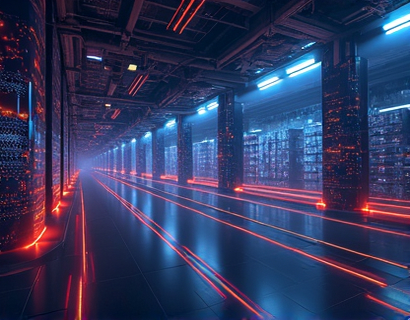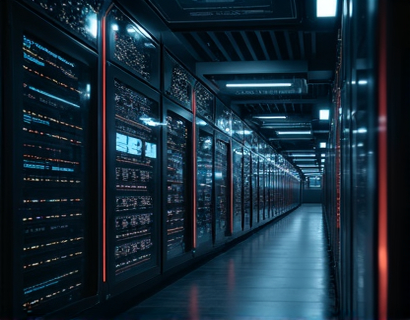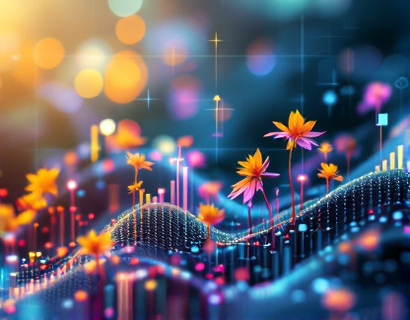Revolutionizing Aquaculture Business Management with Advanced Software Solutions
In the rapidly evolving landscape of aquaculture, business owners and managers face numerous challenges that can impact the success and sustainability of their operations. From managing complex logistics and ensuring optimal water quality to tracking financial performance and complying with regulatory standards, the demands are multifaceted. Advanced software solutions have emerged as a game-changer, offering comprehensive tools that streamline operations, enhance productivity, and optimize resource use. These solutions are designed to provide aquaculture businesses with the edge they need to thrive in a competitive market.
Streamlining Operations
One of the primary benefits of implementing advanced software in aquaculture is the significant improvement in operational efficiency. Traditional methods often involve manual data entry, paper-based records, and disjointed communication channels, which can lead to errors and inefficiencies. Modern software solutions automate many of these processes, reducing the risk of human error and freeing up time for more strategic tasks.
For instance, integrated management systems can handle a wide range of functions, from feeding schedules and water quality monitoring to inventory management and financial tracking. These systems ensure that all critical data is centralized and easily accessible, allowing managers to make informed decisions quickly. Automated alerts and notifications further enhance operational control, ensuring that any issues are identified and addressed promptly.
Enhancing Productivity
Productivity is a key factor in the success of any aquaculture business. Advanced software solutions are designed to boost productivity by optimizing various aspects of the operation. For example, precision feeding systems can calculate the exact amount of feed required based on factors such as water temperature, fish size, and growth rates. This not only reduces feed waste but also ensures that fish receive the optimal nutrition, leading to healthier growth and higher yields.
Additionally, software can facilitate better scheduling and resource allocation. By analyzing historical data and current conditions, these systems can predict the best times for certain activities, such as harvesting or maintenance, thereby maximizing efficiency. This level of optimization is particularly valuable in large-scale operations where coordinating multiple teams and resources can be challenging.
Optimizing Resource Use
Resource optimization is crucial in aquaculture, where water, feed, and energy are significant costs. Advanced software solutions provide tools to monitor and manage these resources more effectively. For example, real-time water quality monitoring systems can track parameters such as pH, dissolved oxygen, and ammonia levels, ensuring that conditions remain within optimal ranges. This proactive approach helps prevent water quality issues that could otherwise lead to fish stress or mortality.
Energy management is another area where software can make a substantial impact. By monitoring and controlling the use of pumps, aerators, and other equipment, these systems can reduce energy consumption without compromising operational efficiency. This not only lowers operational costs but also contributes to a more sustainable operation.
Data Analytics and Decision Making
One of the most powerful aspects of advanced aquaculture software is its ability to provide deep insights through data analytics. By collecting and analyzing data from various sources, these systems can generate valuable reports and dashboards that offer a comprehensive view of the operation. Managers can use this data to identify trends, assess performance, and make data-driven decisions.
For instance, growth rate analytics can help determine the optimal time to harvest, while financial analytics can reveal cost-saving opportunities and improve budgeting. Environmental data can inform sustainability initiatives, ensuring that the operation meets or exceeds environmental standards. This level of insight is invaluable for maintaining a competitive edge and ensuring long-term success.
Compliance and Reporting
Regulatory compliance is a significant concern for aquaculture businesses, with various local, national, and international regulations governing operations. Advanced software solutions can simplify compliance by providing tools to manage and track regulatory requirements. These systems can generate necessary reports and documentation, ensuring that all compliance obligations are met efficiently and accurately.
Automated reporting features save time and reduce the risk of errors in manual reporting processes. This is particularly important for audits and inspections, where having up-to-date and accurate records is crucial. By streamlining the compliance process, these software solutions help businesses focus on core operations while maintaining regulatory adherence.
Integration and Scalability
Modern aquaculture software solutions are designed to be highly integrable and scalable. They can seamlessly connect with existing systems and equipment, such as sensors, pumps, and feeders, creating a cohesive and efficient operation. This integration ensures that all components work together harmoniously, enhancing overall performance.
Scalability is another key feature, allowing businesses to grow their operations without the need for extensive system overhauls. As the business expands, the software can adapt, adding new modules or features as needed. This flexibility is essential for businesses looking to expand or diversify their operations.
User-Friendly Interfaces
Despite the complexity of the tasks they manage, advanced aquaculture software solutions are designed to be user-friendly. Intuitive interfaces and user guides ensure that staff can quickly learn and effectively use the system. This is particularly important in operations where multiple team members may have varying levels of technical expertise.
Training and support are often provided by the software vendors, helping businesses transition smoothly to the new system. Ongoing support ensures that any issues are resolved promptly, and users can continue to maximize the benefits of the software.
Case Studies and Success Stories
Numerous aquaculture businesses have successfully implemented advanced software solutions, achieving significant improvements in various areas. For example, a large-scale salmon farm in Norway reported a 20% reduction in feed costs and a 15% increase in fish growth rates after implementing a comprehensive management system. The system's precision feeding and real-time monitoring capabilities were key to these improvements.
Another example is a shrimp farm in Thailand that used software to optimize water quality management. By closely monitoring and adjusting water parameters, the farm reduced mortality rates by 30% and increased overall production. The software's data analytics features provided valuable insights that informed better decision-making.
Future Trends in Aquaculture Software
The aquaculture software market is continually evolving, with new technologies and innovations on the horizon. One emerging trend is the integration of artificial intelligence (AI) and machine learning (ML) to further enhance decision-making capabilities. AI can analyze vast amounts of data to predict outcomes, optimize processes, and identify potential issues before they become critical.
Another trend is the use of Internet of Things (IoT) devices for more granular monitoring and control. IoT sensors can provide real-time data on a wide range of parameters, from water quality to equipment performance, enabling even more precise management. The combination of AI, ML, and IoT is set to revolutionize how aquaculture businesses operate, making them more efficient, sustainable, and profitable.
Conclusion
Advanced software solutions have transformed the way aquaculture businesses manage their operations. By streamlining processes, enhancing productivity, and optimizing resource use, these tools provide essential support for success in a competitive market. As technology continues to advance, the potential for further improvements is vast, offering exciting opportunities for the future of aquaculture.










































